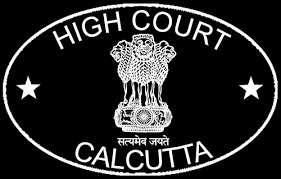L. Narasimha Reddy, J.@mdashOne V. Rosaiah obtained loan from Vijayawada Branch of Vijaya Bank, Eluru Road, the 2nd respondent herein, by mortgaging an item of immovable property. Since he did not repay the borrowed amount, the Authorized Officer of the Bank, the 1st respondent herein, published a sale notice on 7.1.2009, proposing to sell the mortgaged item of property. In the notice, it was mentioned that the premises are in an area of 149.76 Sq.yards, with a house constructed thereon. The respondent participated in the auction and emerged as the highest bidder for a sum of Rs. 22,25,000/-. The sale was confirmed and sale certificate was also issued.
2. Stating that the area of the premises, on physical verification is found to be only 96 Sq.yards, the respondent got issued a notice to the appellants. A reply was given by the appellants, stating that they are not responsible for the deficiency as to extent Not satisfied with the reply, the respondent filed OS No. 1206 of 2009, in the Court of II Additional Senior Civil Judge, Vijayawada, claiming a sum of Rs. 9,18,275.67 ps., being the principal amount of Rs. 8,19,199/-, representing the proportionate cost of the shortfall and interest thereon. She pleaded that once the appellants have mentioned the extent of the plot of land, upon which the building was existing, they were under obligation to ensure that the purchaser is delivered the property according to the specifications. It is stated that the premises were got measured only when the possession was delivered, and when the discrepancy of the extent was brought to the notice of the appellants, they did not make good the loss, suffered by her.
3. Appellants filed written-statement. According to them, the extent, as mentioned in the title deeds, deposited with them, as a measure of mortgage; was indicated in the auction notice, and that the respondent was supposed to verify every detail before participating in the auction. An objection was also raised as to the maintainability of the suit, on the ground that the relief, if any, has to be claimed by initiating proceedings under the Securitization and Reconstruction of Financial Assets and Enforcement of Security Interest Act, 2002 (for short ''the Act'').
4. Through a judgment dated 9.2.2012, the trial Court decreed the suit. Hence, this appeal.
5. Sri E. Ajay Reddy, learned Counsel for the appellants submits that though the extent of 149.76 Sq.yards was mentioned in the notification, any purchaser would get the property on, as is where is basis, and the respondent was under obligation to verify each and every aspect, before participating in the auction. He contends that when the sale is for an item of property, and not on the basis of the extent, there was no basis for the trial Court in passing the decree.
6. Sri Y. Subrahamanyam, learned Counsel for the respondent, on the other hand, submits that the auction notice issued by the appellants is an offer; it is but natural that the offer must be of a specific item, and any discrepancy therein amounts to misrepresentation. He contends that the respondent did not have any opportunity to measure the area, before a sale certificate was issued to her, and it was the duty of the appellants to verify the extent, before issuing the notification, and to deliver the same extent, after the sale became final.
7. The respondent filed the suit for recovery of the amount, representing the cost of the area, that fell short of, what is mentioned in the auction notice. On the basis of the pleadings before it, the trial Court framed the following issues for its consideration:
1. Whether the plaintiff is aware of physical features and exchange and participated in the auction and became highest bidder and that the defendants are not liable to pay the suit amount as pleaded in Para 5 of written statement is true?
2. Whether the suit is not maintainable u/s 31 of SARFA and ESI Act?
3. Whether the suit is liable for rejection under Order VII Rule 11 C.P.C.?
4. Whether the plaintiff is entitled for the suit claim as prayed for?
8. The respondent deposed as PW1, and she filed Exs. A1 to A7. Ex. A1 is the copy of the paper publication; Ex. A2 is the certified copy of the sale certificate; Ex. A3 is the notice got issued by him; Ex. A4 is the reply; Ex. A7 is the copy of the legal opinion, in relation to the said property. Exs. A5 and A6 are reply notice and rejoinder, respectively. On behalf of the appellants, an Assistant Manager was examined as DW1, and he filed a tender schedule, as Ex. B1, and got marked clause 9 thereof. The suit was decreed as prayed for.
9. Now, the points, that arise for consideration, in this appeal, are, as to,
(1) Whether the suit filed by the respondent is not maintainable in law;
(2) Whether there is any shortage of area of the property, brought to sale by the appellants, compared to the one, mentioned in the auction notice, Ex. A1; and
(3) Whether the respondent is entitled to be paid the proportionate amount for any shortfall in the area, mentioned in the sale notice.
10. Before the matter is dealt with, on merits, the objection raised as to the maintainability of the suit needs to be considered. As a matter of fact, the trial Court has framed an issue covering this very aspect. The appellants wanted the plaint itself be rejected, in view of Section 31 of the Act. It is no doubt true that the Act is a comprehensive legislation, and it not only prescribes the procedure to be followed in the context of enforcing securities given to the banks, but also for the hierarchy of remedies. Rarely a suit can be maintained by any person, who feels aggrieved by the steps, initiated under the Act. However, from the scheme under the Act, it is difficult to infer that filing of the suits is prohibited, as a whole.
11. Reliance is placed by the appellants, upon certain judgments rendered by the Supreme Court. In
12. In
Para-51: However, to a very limited extent jurisdiction of the civil Court can also be invoked, where for example, the action of the secured creditor is alleged to be fraudulent or his claim may be so absurd and untenable which may not require any probe whatsoever or to say precisely to the extent the scope is permissible to bring an action in the civil Court in the cases of English mortgages...
13. Support was drawn from two judgments of the Madras High Court, in
14. This exactly is the situation obtaining in the instant case. The property, in question, was the subject-matter of an English mortgage. Though the extent mentioned in Ex. A1 was 149.76 Sq.yards, while processing the loan application, the bank obtained a legal opinion. A copy thereof is marked as Ex. A7. A perusal of the same discloses that the area was found to be just 96 Sq.yards and not 149.76 Sq.yards. Still, the auction notification was issued, mentioning the area as 149.76 Sq.yards. Either there was fraud on the part of the mortgagor, or indifference on the part of the appellants in mentioning the area of the premises. From the observation of the Supreme Court in the judgments, referred to above, it is evident that the questions of this nature cannot be dealt with by the Debts Recovery Tribunal, having regard to the limited scope of the jurisdiction of such Tribunal. Therefore, the Point No. 1 is answered against the appellants.
15. Coming to the second point: It is net in dispute that the area of the premises was mentioned as 149.76 Sq.yards, in Ex. A1. It may be true that an intending purchaser is required to take adequate precaution and verify the property, in all respects. However, the respondent did not have the access to the premises, nor she has an occasion to measure it. Since the auction notice was issued by a reputed Nationalised Bank, one does not tend to suspect, or disbelieve the particulars mentioned therein.
16. The plea of the appellants, that the sale was, in respect of the property, and not its each square yard; cannot be accepted. The area happens to be one of the most important aspects. In the disposal of an item of immovable property, many a time, the value of the plot of land becomes the deciding factor, and the value of the superstructure would not be of much importance. Though in the title deeds deposited with the appellants, the area was mentioned as 149.76 Sq.yards, much before the loan was sanctioned, a legal opinion was obtained, and in the opinion, it was clearly mentioned that the area is 96 Sq.yards. Whatever may have been the justification for the appellants in indicating the area of 149.76 Sq.yards in Ex. A1, at least, when the respondent issued a notice, they ought to have verified the relevant facts, including the legal opinion. Though extensive correspondence was undertaken in this regard, nowhere, the appellants have stated that the area is more than 96 Sq.yards. Hence, the point No. 2 is answered, holding that the area sold by the appellants, through the auction, was only 96 Sq.yards.
17. Now remains the third point: While answering Point No. 2, the importance of the area of an item of immovable property has been mentioned. The premises in question are in a well-developed city like, Vijayawada. Each yard of the area has its own significance and value. The representation made to the respondent through the auction notification is that the area is 149.76 Sq.yards, and the consideration was received therefor. Once it is found that the extent is only 96 Sq.yards, the appellants are under obligation to refund the proportionate amount to the respondent.
18. The trial Court has assigned cogent reasons, while granting the relief. We are not inclined to interfere with the judgment and decree passed by the trial Court.
19. During the course of arguments, it has emerged that the decree obtained by the appellants against the borrower Mr. Rosaiah was, for about Rs. 15 lakhs, whereas the auction fetched a sum of Rs. 22,25,000/-. The balance amount is with them. It is brought to the notice of this Court that a third party initiated proceedings against Mr. Rosaiah for recovery of the amount, in respect of another transaction, and that an order of attachment, in respect of the amount, that is lying with the appellants, after satisfaction of the decree, has been obtained. The said amount is the subject-matter of the suit, and thereafter this appeal. The attachment can hold good, as long as the amount was payable to Rosaiah. The payment of that amount would amount to rewarding him for the fraud, he has played in describing the area as 149.76 Sq.yards, though it is actually 96 Sq.yards. Rosaiah cannot have any right over the amount unauthorisedly procured by the appellants from the respondent.
20. Hence, we dismiss the appeal, and it is observed that the payment of the proportionate amount to the respondent, as per the decree, shall not be treated as violation of the orders of attachment, if any, passed against the appellants, or the mortgagor, Mr. Rosaiah. The miscellaneous petitions filed in this appeal shall also stand disposed of. There shall be no order as to costs.

